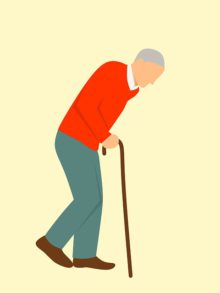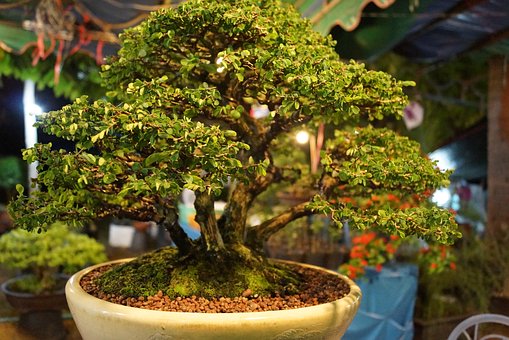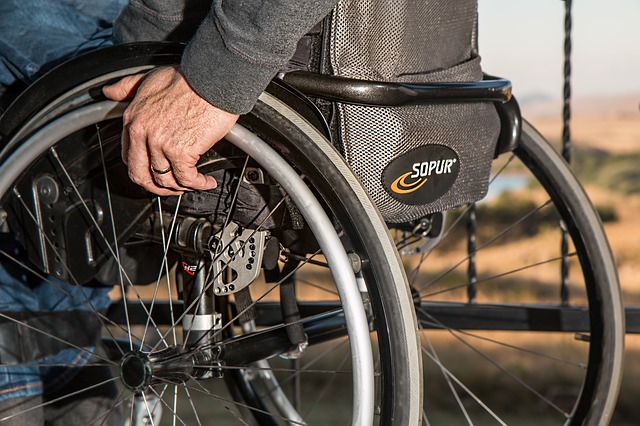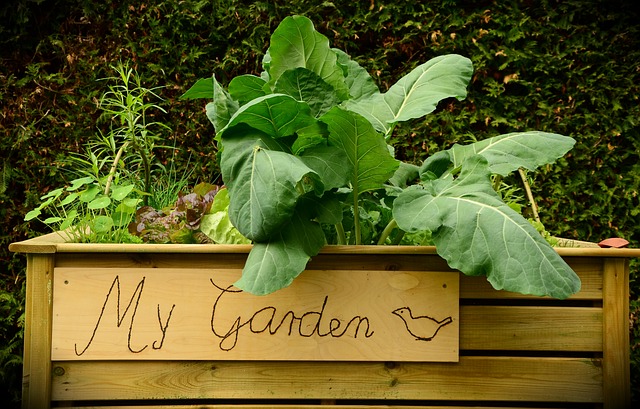In this article, we will be discussing why container gardening is better for those with disabilities. These disabilities prevent them from leading a full, active life, especially in the garden.
When we think of a traditional garden, we see large areas that need to be dug over, fertilizer to be added, weeding and plants that need to be planted.
This is a daunting task for an able body person, but if you have limited mobility, this seems impossible, especially if you are in a wheelchair. The thought of kneeling becomes impossible and moving over rough terrain and sticky mud leads to falls and injury. This is not a good perspective for them at all.

Having a disability can lead to depression, as gardeners go back to longing, where they could spend half a day digging, weeding, and planting. This is of course for people who have been able to garden in the past, but the past is far behind them.
Some people are born with a disability and to them, they think gardening is only a distant possibility. They yearn to be able to get their hands in the dirt and they want to grow their own flowers, vegetables and fruit but feel that they cannot do it.
I always say that if a person wants to garden, then they should garden. Your disability should not hold your back.
GARDENING IS FOR ALL NOT JUST THE ABLE
Doctors are always telling us that gardening increase our wellbeing in reducing depression, increasing our activity levels and improving our mental state. As we get older, or become ill or have never been in the best of health, gardening does not become a joy but instead becomes a burden. You need to create an enabled garden that is tailored to you and your disabilities in question.
Enabled gardening is when you adopted your garden to enable it to be more disable friendly. This is based on similar ideas that homes and vehicles have been remodelled to make it easier for people with disabilities to get around or to make it more comfortable in the home. This involves using raised beds, tall containers, modified tools, more patio areas, and more importantly wider pathways.

The aim of the garden for the disabled is to be a functioning one for old and young, able and disabled, blind or those with sight, and those who have a serious health condition or not. You will see that there are many designs for the disabled as the able gardener.
An important feature in gardening for the disabled are raised beds, as this bring the garden close to the person in question, and not the other way around.
HOW TO IMPROVE YOUR GARDEN DESIGN
You need to ensure that the paths are wide enough to allow a person with a walking stick, frame, or wheelchair to be able to use them. It must be smooth as possible, no trip hazarded and be within a comfortable walking distance.
- Have the containers within reach from all sides, so that plants can be tendered easily.

High raised beds are ideal for wheelchair users
- Raise bed are a good idea. For a wheelchair user, the bed must be a comfortable level so that the compost within can be easily reached. Reached without any discomfort or overstretching. This is why the bed height will change from one wheelchair user to another. I personally would have the height of the raised bed slightly higher than the wheelchair height, so that it is comfortable to work with the raised bed in s seated position.
- Have a water source close to your containers or raised beds so that you do not need to keep going back and forth with a watering can to get water. You can do this by using hoses or an irrigation system.
HOW TO IMPROVE ACCESS
Look at your present design and see what improvement needs to be made. Ensure you can get access to your garden between house and walls, house and fences, into your greenhouse, shed, or other areas of your garden.
- Ensure that all pathways and access points are anti-slip and not too shiny. Make sure it has the least gradient possible and, the surface must be even as possible, no cracks in it and especially no moss growing on top of it.
- Moss and algae can make pavements very slippery and therefore dangerous.

Only use short gradient ramps in your garden.
- If a ramp is necessary try not to make it greater than 4 degrees, as it is difficult getting around if it is larger than this.
- Make sure the path is kept in tip-top conditions, no overhanging plants, no moss, no algae and no leaves.
- Make sure the pathway is well lit, so you can see the pathway in the dark and on dull days.
- If you can walk you may need to use handrails and seating areas, which can be placed near your containers or raised beds.
- You can put your hanging baskets on a pulley system that is within easy reach of the disabled person in question. This does not matter if you are in a wheelchair or using a walking stick. The pulley need to be accessible and easy to manoeuvre, so that is can be raised and lowered with ease, Do not sit or stand under the hanging basket whilst raising the basket up or down, as this is not sensible and can cause injury.
BEST WATERING PRACTICE
- Give your plants a good soaking in the morning or evening once every three days. This is better than watering a little every day.
- As mentioned previously grouping pots together are a good idea as this will make watering easier. This is because you do not have to walk far to water all over the garden.
- You can stand your plants in container on top of a saucer as this will increase the moisture available to the plants.
- Mulch on top of the containers with organic or inorganic mulch, as this will reduce moisture losses (see mulching and general plant care in containers).
- Use water retaining gel mixed with your compost (see review here), as this will improve your water retention and the need to water frequently.
ADAPT YOUR METHODS
- Use containers and raised beds more as these are easier to deal with.
- Consider gardening from a seated position, so place more benches, stools, chairs and support handlebars in an accessible position, where the containers and raised beds are within easy reach.

Use Raise beds as much as possible
- Use long handle tools than can reach within the raised bed or containers that can be reached from a seated or standing position. Ideally, tool height can be adjusted to make it comfortable for the person using it.
- Use long pruning handles when pruning shrubs or trees. It is much safer than using ladders or if you cannot prune, ask someone able to do it for you.
CHANGE HOW YOU GARDEN
- Garden sensibly, little and often is better than all in one go.
- You need to warm up a little bit by doing some gentle, stretching, exercises, as this will warm the muscles up. When you have finished it is also advised to warm down to start the muscles from getting stiff. In this way, you can avoid causing a nasty injury.

Wheelchair users can also garden
- Assess what job you can do and which you cannot. For jobs that are too labour intensive or too difficult think about a friend, neighbour or hire a gardener to do it for you.
- Considers buying a trolley, tool caddies, or tool belts to help you cart your tools about.
- Consider using a professional landscape gardener who can design your garden to your own specific needs.
GET YOUR PLANT SELECTION CORRECT
- Choose plants that are suitable for containers rather than plant that are not suitable for these growing conditions.
- If you have inherited a garden with unsuitable plants exchange them for more suitable plants.
- Replace annuals with hardy perennials. In this way, less maintenance will be required and you will not need to replace them every year.
- Drought tolerant plants are best to use, as this will do well if moisture is lacking.
- Grow slow growing specimens that do not require much maintenance, in your containers and raise beds. Shrubs and perennials that do not require much pruning are the best.
- Replace climbers that require to be supported on trellises, walls, fences and pergolas, with self-clinging species. You can also grow climbers through shrubs,
- Grow miniature roses that require little pruning in place of climbing roses, tea hybrids and floribundas.

Grow small shrubs like Philadelphus
- In raise beds, use plenty of ground cover plants to suppress weeds.
- Plant lots of bulbs that can naturalize in containers or raised beds. You can use bulb planting baskets, which will make the job easier.
- For easy to look after plants I would suggest Aucuba japonica, Viburnum tinus, Fatsia japonica, Philadelphus, Choisya ternata, and other small shrubs.
- For perennials, I would suggest using evergreen perennials that do not need cutting back each year. I am in the process of writing an article on evergreen perennials that are suitable to be grown in containers, which will be published soon.
- All bulbs I would recommend but I would not recommend annuals as this will take more looking after.
- For ground cover, I would recommend Vinca minor, Aubretia, Creeping Phlox, and Snow in Summer.
CONCLUSIONS
In this article, we have discussed why container gardening is better for those with disabilities. You can see that gardening for people who are less able is not impossible but with certain adaption, you can garden to your heart content.
All you need to do is widen your paths, ensure the pathways are smooth as possible, have no defects, have as little gradient as possible and to keep ramps to a minimal. To use raised bed and containers, you add seating and handlebars as much as possible. You will need to add mulch and to water wisely, to use tools with long handles and are ergonomic as possible.
Finally to adapt and be careful of what plants you can use in your garden. If all these steps are followed you will find that most disabled gardeners can adapt to their garden.
Remember not to work too hard, do what you can do and hire someone for jobs which are more difficult. Make the garden design suitable for yourself and everybody will benefit including your able friends and family,
If you have any questions or comments you have and wish to make, please do so in the comment box below.
Thanks.






Now I can relate to this topic completely, because my late Mother in Law, was disabled, but loved her garden and had an array of container plots, which were her pride and joy and boy did we get it in the neck, if they were not looked after when she had day centres and stuff to do
It makes it all manageable for them and gives an added purpose to their life which, some of us may take for granted. I enjoyed reading this and have shared it via Twitter
Hi Dave
I felt sorry for your late mother-in-law and you, To many having a beautiful and functioning garden is a must, as it brings so much pleasure and joy to them. This joy should not be denied if you are disabled. Thisis why the article was written.
Kind Regards
Antonio
I have loved this article because you have really shown that you also care about those with disabilities by providing them with ideas how container gardening is better for them I have really enjoyed this article and what I have also loved about container gardening is that its not only for the disabled thanks very much Antonio
Hi Mugalu
Thank you for those kind words, I hope that you see that disabilities should not hold you back, If you want to garden, then you should garden.
Kind regards
Antonio
I didn’t even realize how good gardening is for the mental health, even though I do a little bit of gardening myself. Considering the health benefits of spending time in the nature, this makes sense, because a garden is nature too. I hadn’t thought of accessibility of gardening for people with physical disabilities either. Thank you for bringing this up!
Now that I read your post, it makes sense that wide and smooth pathways in the garden and raised bed for the plants help someone in a wheelchair.
Can I ask is it generally recommended to water plants generously every 3 days instead of little bit daily? I mean is this practice recommended anyway, not just because it’s easier for a disabled person? If that’s the case, I may have been doing it wrong, because in the summer, I usually water the plants a little bit daily.
Hi Kirsti
It is always good to write a thought-provoking article to get people to think about helping those who struggle to do things. My article demonstrates that gardening with disabilities is not only possible but can be enjoyed. This is provided you adapt the technique as suggested in this article.
Yes, I am afraid you have been doing it wrong. You need to water thoroughly once every two to three days than wetting the surface regularly with an insufficient amount of water. The water will not reach the roots. Only water when necessary, so if the compost is still wet you have no need to water. If it is dry then watering is required. Througher is better than light watering.
Thank you for stopping by.
Antonio
This is one thing I would never have considered ever before until I read this post. Wow! Really massive one and surely worthy of a read. I never thought disabled people could engage in gardening but having read here, it actually seem like a very possible adventure for all since the setting would be to their favor and would invariably make everything else easier. Wow! Thumbs up for sharing this
Hi Rodarrick
Thank you for this insightful and useful comment. I see it as very encouraging, Keep popping by, as I am sure you will enjoy my future articles,
Kind regards
Antonio
Thanks for sharing this helpful and resourceful information, I actually don’t know there are some kind of specifications that can make your container garden be more disabled friendly. With these tips, people will e able to put the disabled into consideration like widening the path in the garden, using raised or high heeled containers and some others that you’ve mentioned in this article. It’ll be of great help.
Hi Drejay
Thank you for your comment. I am trying to make gardening easier for those with a disability. The tips are all useful and practical.
Kind regards
Antonio
You are absolutely 100% correct here, I love my garden and I have osteoarthritis in my knees, which limits my mobility and yes I still manage to maintain my garden, in fact, I believe that people with disabilities along with the elderly are often more likely to be interested in gardening as a hobby, so it really is great that you have took the time to write this post to help and give tips and ideas for this group of people, thank you for sharing and keep up the good work.
Hi Russ
Thank you for stopping by and your continuing support, I am sorry that you suffer from this painful condition but in fact, exercise strengthens muscles, which will help you to support your knees better. I hope you adapt these techniques mentioned in the article to your own garden.
Thanks
Antonio
Thank you very much for this great article,
Am so greatful for this great article about using containers in garden for disabled.This group is ignored by many people who don’t think that they are more useful. People with disabilities can do great things life; Gardening will keep a disabled person busy hence preventing depression and boredom. Thanks once again, keep writing articles that inspire this group.
Hi Mugalu
Thank you very much for those kind word, I hope to be reviewing useful tools for this group in the near future. Keep dropping by.
Kind Regards
Antonio
Thank you for your post. It is considerate of you to ensure that disable individuals could enjoy gardening. Gardening brings a lot of benefits to all, normal and disable ones.
Gardening is an outdoor activity or exercise, which improves overall well-being. The baby boomers are entering retirement age. The demand for container gardening will increase. As we get older, or become ill, conventional gardening does not become a joy but instead becomes a burden. The container gardening has the potential to tailor the needs of the disable individuals.
It is kind of you sharing this useful information with us.
Hi Anthony
You are so right with you kind words. Disability should not be seen as a drawback, but only a technique that needs to be adapted to your situation. You can still enjoy it and get lots out of it.
Kind Regards
Antonio